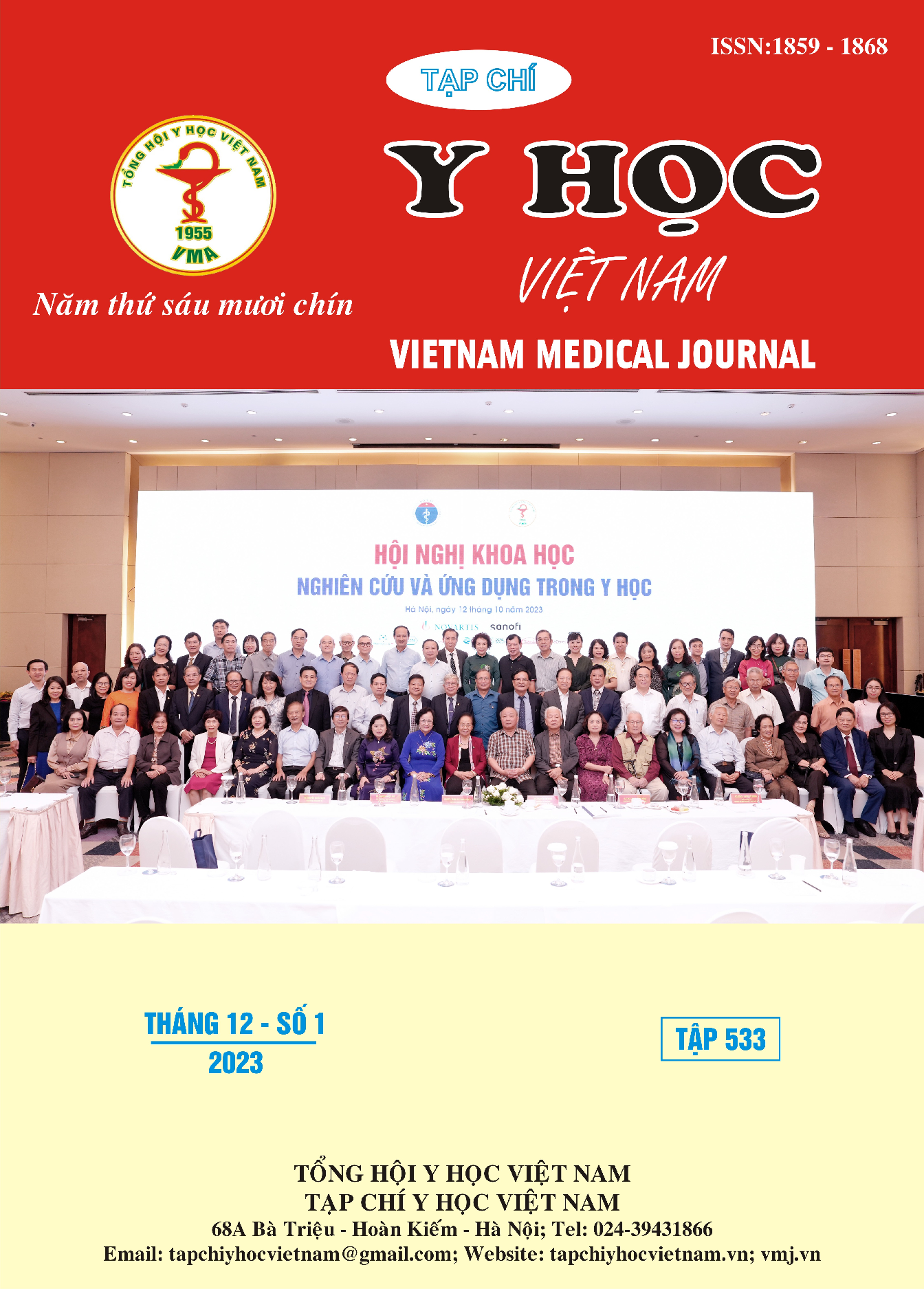RESEARCHING IMAGING FEATURES IN COVID-19 PNEUMONIA OF CHEST COMPUTED TOMOGRAPHY AND ITS CORRELATION WITH THE SEVERITY OF THE DISEASE
Main Article Content
Abstract
Purpose: To describe the imaging characteristics on computed tomography (CT) of lung lesions caused by COVID-19 and their relationship with disease severity. Materials and methods: A retrospective descriptive study included 160 patients with a confirmed diagnosis of COVID-19 by RT-PCR, with complete medical history information on electronic medical records and chest CT scans at the admission in COVID-19 departement of Hanoi Medical University Hospital from September-2021 to January-2023. Results: Typical COVID-19 lung lesions included ground-glass opacity (GGO - 98.1%), consolidation (67.5%), dilated vessels (39.3%), crazy-paving (31.8%) and bronchiectasis (23.8%). The distribution of COVID-19 lung lesions usually predominates in the lower lobe (77.5%), peripheral (67.5%) and posterior segment (40%) and bilateral (94.4%). Uncommon and non-specific lesions included pleural effusion (11,9%), pericardial effusion (6.3%). GGO often appear regardless of the severity of the disease (p<0.01). Meanwhile, consolidation (p<0.01), dilated vessels (p=0.033) and bronchiectasis (p<0.01) appeared to increase gradually with disease severity. The shape of opacification: round shape is dominant at mild and moderate severity (p<0.01), while at more severe levels, the shape tends to be diffuse geographic configuration (p<0.01). Conclusion: The imaging features of COVID-19 lung lesions are very typical and closely related to disease severity, so the assessment of lung lesions and their distribution contributes to increase the specificity of the diagnosis and disease severity.
Article Details
References
2. Carotti, M. et al. Chest CT features of coronavirus disease 2019 (COVID-19) pneumonia: key points for radiologists. Radiol Med 125, 636–646 (2020).
3. Performance of Radiologists in Differentiating COVID-19 from Non-COVID-19 Viral Pneumonia at Chest CT | Radiology. https://pubs.rsna.org/doi/10.1148/ radiol.2020200823.
4. Xu, X. et al. Imaging and clinical features of patients with 2019 novel coronavirus SARS-CoV-2. Eur J Nucl Med Mol Imaging 47, 1275–1280 (2020).
5. Nguyễn V. T., Hoàng V. H., Phạm T. T. T. & Trần V. V. đặc điểm hình ảnh và mối liên quan giữa điểm số trầm trọng của viêm phổi do covid-19 trên phim chụp x quang, cắt lớp vi tính ngực với một số chỉ số lâm sàng. vmj 517, (2022).
6. Trâm H. T. Đ., Thi L. T. & Hầu C. H. đánh giá hệ thống thang điểm tss và brixia trong x-quang ngực ở bệnh nhân mắc bệnh covid 19. vmj 510, (2022).
7. Clinical Spectrum. COVID-19 Treatment Guidelines https://www.covid19treatment guidelines.nih.gov/overview/clinical-spectrum/.
8. Betron, M., Gottert, A., Pulerwitz, J., Shattuck, D. & Stevanovic-Fenn, N. Men and COVID-19: Adding a gender lens. Glob Public Health 15, 1090–1092 (2020).
9. Şanlı, D. E. T. & Yıldırım, D. A new imaging sign in COVID-19 pneumonia: vascular changes and their correlation with clinical severity of the disease. Diagn Interv Radiol 27, 172–180 (2021).
10. Li, Q., Huang, X.-T., Li, C.-H., Liu, D. & Lv, F.-J. CT features of coronavirus disease 2019 (COVID-19) with an emphasis on the vascular enlargement pattern. Eur J Radiol 134, 109442 (2021).


